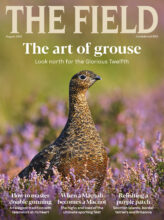Everything about the scallop is special, from its sweet taste and firm texture to the way its fan-shaped shell has been adopted as an architectural motif and a symbol of voyage and pilgrimage. According to The Oxford Companion to Food, the shape is so recognisable that in Thailand one type is now called “hoy shell” rather than its traditional name of “hoy phat”, after the oil company. (Shell has the scallop as its logo because it originally imported exotic shells.)
The scallop on the plate is a single, white, round muscle.
“If all the bivalves held a bodybuilding competition… the scallop would win the Mr Universe title every time,” write Hugh Fearnley-Whittingstall and Nick Fisher in The River Cottage Fish Book.
There’s a good reason for this. Unlike mussels or oysters, scallops are mobile. They move forward by opening and closing the shell. Divers speak with wonder at watching a congregation of scallops going along the seabed as if in flight. The Japanese word for scallop means “full-sail fish”.
The scallop is also a hermaphrodite: the orange part of the attached coral contains the eggs and the white part holds the sperm. The scallop releases these at different times and in different places in order not to fertilise itself.
Demand for these bivalves has led to two contrasting ways of bringing them to the table: dredging and diving. Dredging involves dragging toothed metal nets along the seabed, which plough up everything in their track. Diving, by contrast, is the ultimate sustainable fishery. The divers pick only mature shells and remove them by hand, leaving the eco-system intact.
The Handpicked Shellfish Company sells dived scallops at a number of farmers’ markets in London and Bristol. Founder Matthew Baldwin gathers them from off the Dorset coast. He speaks of what can be left behind by dredgers. “I’ve been in areas that look as if you are diving in a car park. Everything’s bashed down and there are no corals left,” he says. “It’s a pretty unforgiving way of fishing.”
Writer and sailor Guy Grieve set up The Ethical Shellfish Company on the east coast of Mull when he witnessed the devastation done to the seabed by dredgers. “The scallop is a totem of two different ways of treating the outdoors,” he says. “One involves the most harmful way of fishing while the other is very respectful.”
Scallop dredgers can even tear up kelp forests to improve access to scallops, says Grieve. The fertile shallows on the edge of our coasts are especially important to marine ecology and the future of fishing as a whole, he believes, and he would like to see these areas better protected.
Fishermen who have used up their quota for catching fish can turn to scallop dredging. Environmental campaigners say the government needs to ensure this is done in a way that minimises damage to the seabed.
Grieve and his fellow divers off Mull put immature scallops into what he calls “chucky” areas: safe patches exposed to the big tidal flows of the Hebrides where they can spawn and repopulate the sea before they are gathered once they mature.
Ethical Shellfish scallops are sold to some of the best seafood chefs in Scotland and London, including Caprice Holdings, where the chef-director Tim Hughes has been a great supporter. They have just launched in 12 branches of Waitrose in London and Booth’s in the north of England.
Grieve thinks some dredged shellfish are mis-sold as dived in order to get the premium. As with meat, knowing and trusting your source is the best way to go.
The beautiful simplicity of a scallop is reflected in the best ways to cook it. Top chefs often just get a frying pot searing hot and use sunflower rather than olive oil because it has a higher burning point. A bit of butter is added for flavour when the scallop is turned over, with a squeeze of lemon and seasoning.
Some like their scallop to be almost raw in the centre and just give it 30 seconds to a minute on each side. Others cut large scallops in half horizontally and cook them for the same amount of time to get a crispy brown outside and less rawness within. Some like to eat fresh scallops raw, as sashimi.
Scallops are also delicious barbequed in their shell. Grieve, who lived in Alaska for a year, says sometimes he just balances the cleaned scallop with a bit of butter on three small rocks, curved shell down and the flat shell acting as a lid, and lights a fire of twigs below to steam the meat. A gourmet meal can be made just yards from the sea.
www.ethicalshellfishcompany.co.uk
Hand Picked Shellfish 07968 176485





